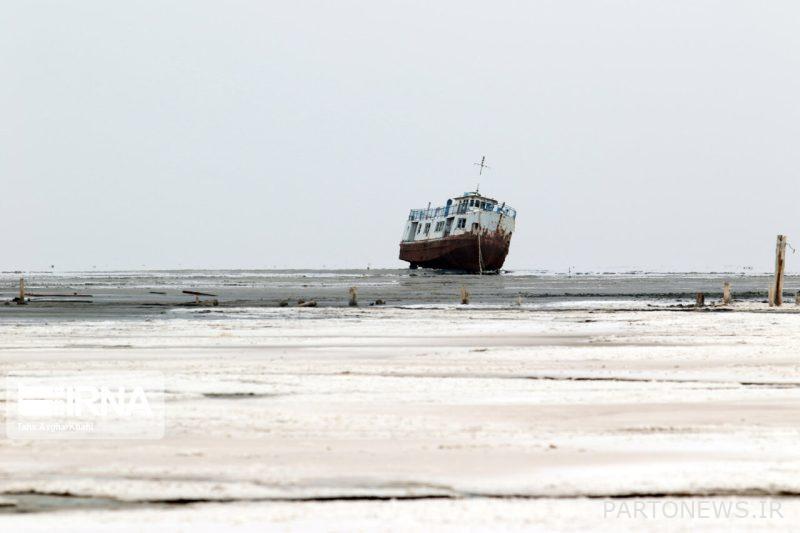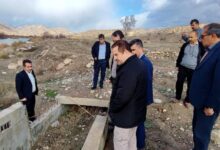“Lithium” is worth the drying up of lakes?

Surveys show that although drought and dam construction have caused the drying up of internal lakes and efforts have been made to restore them, this drying up brings with it many financial resources (lithium extraction).
The drying up of lakes such as Urmia, Qom salt lake, Bakhtegan, Hamon, Jazmurian, etc. in Iran, which appeared almost since the late seventies, has several reasons, each of which can be investigated in its own place. However, according to media reports, the existence of huge resources of “lithium” at the bottom of these lakes may be one of the reasons for insufficient attention to the drying process of these important natural resources and the delay in its restoration.

In this article you will read:
Lithium and its application
The largest and largest lithium reserves in the world are in Bolivia and Afghanistan, and even a number of experts considered one of the reasons for the Bolivian coup and the American war in Afghanistan, especially during the Trump era, to be the access to rich lithium mines in this country. Lithium is a silver-white and soft alkaline metal. It has an atomic number of 3. This element is the lightest metal and the least dense solid element under standard conditions of temperature and pressure. Due to lithium’s high reactivity, it can never be found as a free element in nature and is always found in a part of a chemical compound that is mostly ionic. Since lithium dissolves in water, in the form of ions in the water of the oceans and in the form of salt in the waters and [خاک]Clay is also seen. Lithium and its compounds have many applications, including heat-resistant glass and ceramics, alloys with high resistance to weight used in spacecraft, lithium batteries for electric cars, and in medical applications as medicine.
The largest and largest lithium deposits in the world are in Bolivia and Afghanistan, and even some experts considered access to rich lithium mines in this country to be one of the reasons for the Bolivian coup and the American war in Afghanistan, especially during the Trump era. Iran’s largest lithium mines are located in the east of the country and in South Khorasan province, in the city of Nehbandan and around Birjand. After that, the salt lake of Qom, Chaharmahal, Bakhtiari and Isfahan also have this mine. This material is a type of mineral soil that can be obtained even from salt water.
How many lakes have dried up in Iran?
It may not be possible to correctly obtain the number of dried up lakes in Iran, but some of them can be considered due to their ecological importance. The most important and largest of them is Urmia Lake, which seems to be taking its last breath these days and there is nothing left until its complete death. Hamon Lakes in Sistan and Baluchistan province on the eastern border of Iran, Kaftar, Bakhtegan, Maharlo, Parshan and Tashk lakes in Fars province, Jazmurian lake in the south of Kerman and west of Sistan and Baluchistan, Gavkhoni wetland in Isfahan province, Namak lake and Hoz Sultan in the province Qom and … are among the most important dried up lakes of Iran, and ironically, some of them, such as Qom salt lake, Hoz Sultan lagoon, Urmia lake, etc., are among the most important rich sources of “lithium”.

Lake Qom
Iran is one of the few countries that has access to adequate amounts of reserves of rare earth elements and precious metals, after the exploration process of mineral zones in 2014, the identification of lithium reserves was one of the events that occurred in these discoveries, and rare metals such as lithium metal It was observed in different regions of the country in appropriate amounts and its semi-industrial extraction was put on the agenda.
Lithium is now sold in the global markets as a metal, at a price of around $160 per kilogram. Most of the rare earth elements and rare metals require high technology for extraction, and unlike other mineral products, they are bought and sold in small quantities and in kilograms. It is possible that this is due to their high price and the difficulty of their extraction, and if it is possible to obtain an advantage in the extraction and production of these materials, they will have a high added value in practice, because a metal such as lithium has many uses in “high-tech” industries and the use It has increased more than 10 times since 2015.
The exploration and extraction of this metal requires high technologies, and considering that today the world is moving towards electronic cars whose batteries are also made of lithium, this precious metal is mentioned as one of the needs of today’s technology.
Lithium is now sold in the global markets in the form of metal for approximately $160 per kilogram, as well as its concentrate with the qualities of “battery manufacturing quality”, “lithium carbonate” and “concentrate” respectively at around $20,000. It is sold for seven dollars and five dollars per ton.
Herring that benefited the profiteers
As it is known, lithium metal is one of the precious metals that has been used for various purposes in recent years and there is a great demand for it in the world markets, so that the price of this metal in the Shanghai market has increased by more than 400% in less than 8 months. It has increased.
This article is related to the specialized and difficult extraction of this metal, which is mostly obtained from the salt water of the ocean and the bottom of the seas, but in Iran it is easily obtained at a depth of half a meter and in some cases from the surface of dried lakes. This issue is like herring fishing, which was created from unbalanced development programs, especially in the field of building dams and drying up wetlands, in favor of profiteers and opponents of lake restoration.
Of course, harvesting in this way may be very easy and hassle-free and low-cost, but in the long run, it has a lot of effects on the ecosystem, and the death of many lakes and wetlands means the death of nature and the depopulation of the area involved in this process.

Examining the situation of environmental protection in the world is so serious that a country like Sweden in Europe, despite having the largest gold mine in Europe (Boliden), has closed it since 1967 and only two mining companies Lundin and Sundik are working in this country. . The use of mineral reserves is very important and necessary in the field of economy.
Due to the specialized and difficult extraction of this metal, which is mostly obtained from ocean water and the bottom of the seas, but in Iran it is easily obtained at a depth of half a meter and in some cases from the surface of dried lakes. This method of use is important when it is based on the principles of sustainable development. Sweden has preferred to invest in the tourism industry instead of generating income from mines, in order to preserve its environment and just when most parts of the world are facing the problem of water scarcity and subsidence, this country has a very good situation and it is not unlikely that In the future, it will be one of the few places in the world to migrate and escape from the critical environmental situation.
In general, we can say; The definite amount of income generation through tourism and that too despite Iran’s good potentials (Lake Urmia and Salt Lake Qom in the heart of the desert) will be more stable and logical in this field.

